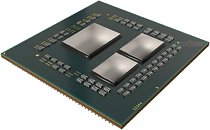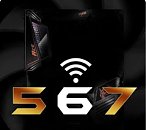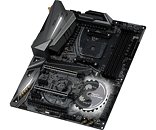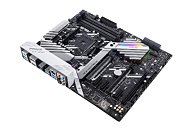
BIOSTAR Racing X570GT8 Zen 2 Motherboard Pictured and Detailed
MSI, without naming its product, teased its MEG X570 Ace motherboard late last week, obeying the cardinal rules of a teaser, such as not putting out clear pictures or names. BIOSTAR probably wanted to do something similar, but ended up leaking glaring details and pictures of its flagship socket AM4 motherboard based on the AMD X570 chipset, the Racing X570GT8. The X570 is AMD's first in-house design chipset for the AM4 socket after "Promontory" and FM2-based "Bolton," supplied by ASMedia. It was necessitated by the need to get downstream PCIe connectivity from the chipset to be certified for the latest generations (gen 3.0 or later), by AMD, and overcome many of the connectivity limitations of ASMedia "Promontory," from which AMD carved out previous socket AM4 chipsets.
Design compulsions of being a flagship product aside, there are signs of a clear focus on strengthening the CPU VRM on the Racing X570GT8, to cope with the rumored Ryzen 9 series 16-core "Zen 2" processor. The board draws power from a combination of 24-pin ATX and 8+4 pin EPS connectors, conditioning it for the processor with a 12-phase VRM. There are two metal-reinforced PCI-Express x16 slots wired to the AM4 SoC, and we get the first glimpse of the PCI-Express gen 4.0 lane switching and re-driver circuitry. We haven't seen anything to suggest that the downstream PCIe lanes from the X570 chipset are gen 4.0, yet, but we expect them to at least be gen 3.0. The presence of three M.2 slots bodes well for the downstream PCIe lane count. ASMedia "Promontory" puts out a paltry eight gen 2.0 lanes. It's also interesting to see an active fan-heatsink cooling the X570 chipset, indicating a rather high TDP compared to the 3-5 Watt TDP of the 400-series "Promontory" low-power variant chipsets. The component choices by BIOSTAR look premium and are a callback to its T-Power glory days enthusiasts remember.
Design compulsions of being a flagship product aside, there are signs of a clear focus on strengthening the CPU VRM on the Racing X570GT8, to cope with the rumored Ryzen 9 series 16-core "Zen 2" processor. The board draws power from a combination of 24-pin ATX and 8+4 pin EPS connectors, conditioning it for the processor with a 12-phase VRM. There are two metal-reinforced PCI-Express x16 slots wired to the AM4 SoC, and we get the first glimpse of the PCI-Express gen 4.0 lane switching and re-driver circuitry. We haven't seen anything to suggest that the downstream PCIe lanes from the X570 chipset are gen 4.0, yet, but we expect them to at least be gen 3.0. The presence of three M.2 slots bodes well for the downstream PCIe lane count. ASMedia "Promontory" puts out a paltry eight gen 2.0 lanes. It's also interesting to see an active fan-heatsink cooling the X570 chipset, indicating a rather high TDP compared to the 3-5 Watt TDP of the 400-series "Promontory" low-power variant chipsets. The component choices by BIOSTAR look premium and are a callback to its T-Power glory days enthusiasts remember.













